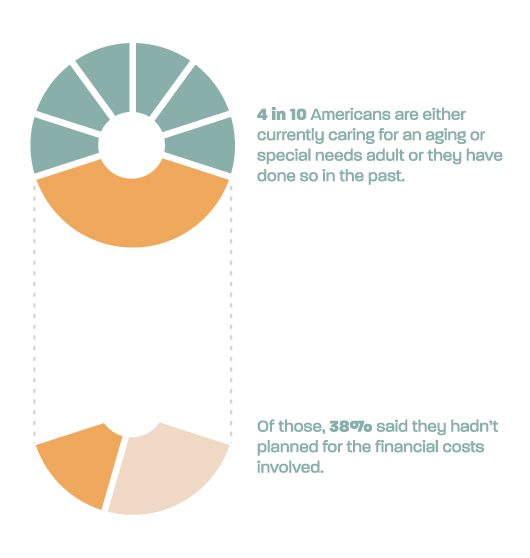Understanding Long-Term Care
Addressing the potential threat of long-term care expenses may be one of the biggest financial challenges for individuals who are developing a retirement strategy. The U.S. Department of Health and Human Services estimates that 70% of people over age 65 can expect to need long-term care services at some point in their lives.1 So understanding the various types of long-term care services and what those services may cost is critical as you consider your retirement approach
What Is Long-Term Care?
Long-term care is not a single activity. It refers to a variety of medical and non-medical services needed by those who have a chronic illness or disability most commonly associated with aging.

Tip: Won’t Medicare Pay for It? After a three-day hospital stay, Medicare will cover the first 20 days in a skilled nursing care facility completely. For the next 80 days, it will cover all but $157.50 per day. And after 100 days, it won’t cover anything. Source: Centers for Medicare and Medicaid Services, 2015
Long-term care can include everything from assistance with activities of daily living help dressing, bathing, using the bathroom, or even driving to the store to more intensive therapeutic and medical care requiring the services of skilled medical personnel. Long-term care may be provided at home, at a community center, in an assisted living facility, or in a skilled nursing home. And long-term care is not exclusively for the elderly; it is possible to need long-term care at any age.
How Much Does Long-Term Care Cost?
Long-term care costs vary state-by-state, and region-by-region. The national average for care in a skilled care facility (single occupancy in a nursing home) is $91,250 a year. The national average for care in an assisted living center (single occupancy) is $43,200 a year. Home health aides cost a median $20 per hour, but that rate may increase when a licensed nurse is required.2
Fast Fact: Getting Care Now. Some 1.4 million adults live in skilled nursing facilities. Another 4.8 million remain in their own homes but get help with personal care from other people. Sources: CDC, 2015. (Data from 2013 report is the latest available.)
What Are the Payment Options?
Often, long-term care is provided by family and friends. Providing care can be a burden, however, and the need for assistance tends to increase with age.4 Individuals who would rather not burden their family and friends have two main options for covering the cost of long-term care: they can choose to self-insure or they can purchase long-term care insurance. Many self-insure by default simply because they haven’t made other arrangements. Those who self-insure may depend on personal savings and investments to fund any long-term care needs. The other approach is to consider purchasing long-term care insurance, which can cover all levels of care, from skilled care to custodial care to in-home assistance. When it comes to addressing your long-term care needs, many look to select a strategy that may help them protect assets, preserve dignity, and maintain independence. If those concepts are important to you, consider your approach for long-term care.
The Best-Laid Plans

Source: U.S. News and World Report, November 13, 2015
- U.S. Department of Health and Human Services, 2015\r\n2. Genworth 2015 Cost of Care Survey
The content is developed from sources believed to be providing accurate information. The information in this material is not intended as tax or legal advice. It may not be used for the purpose of avoiding any federal tax penalties. Please consult legal or tax professionals for specific information regarding your individual situation. This material was developed and produced by FMG Suite to provide information on a topic that may be of interest. FMG Suite is not affiliated with the named broker-dealer, state- or SEC-registered investment advisory firm. The opinions expressed and material provided are for general information, and should not be considered a solicitation for the purchase or sale of any security. Copyright 2017 FMG Suite.
